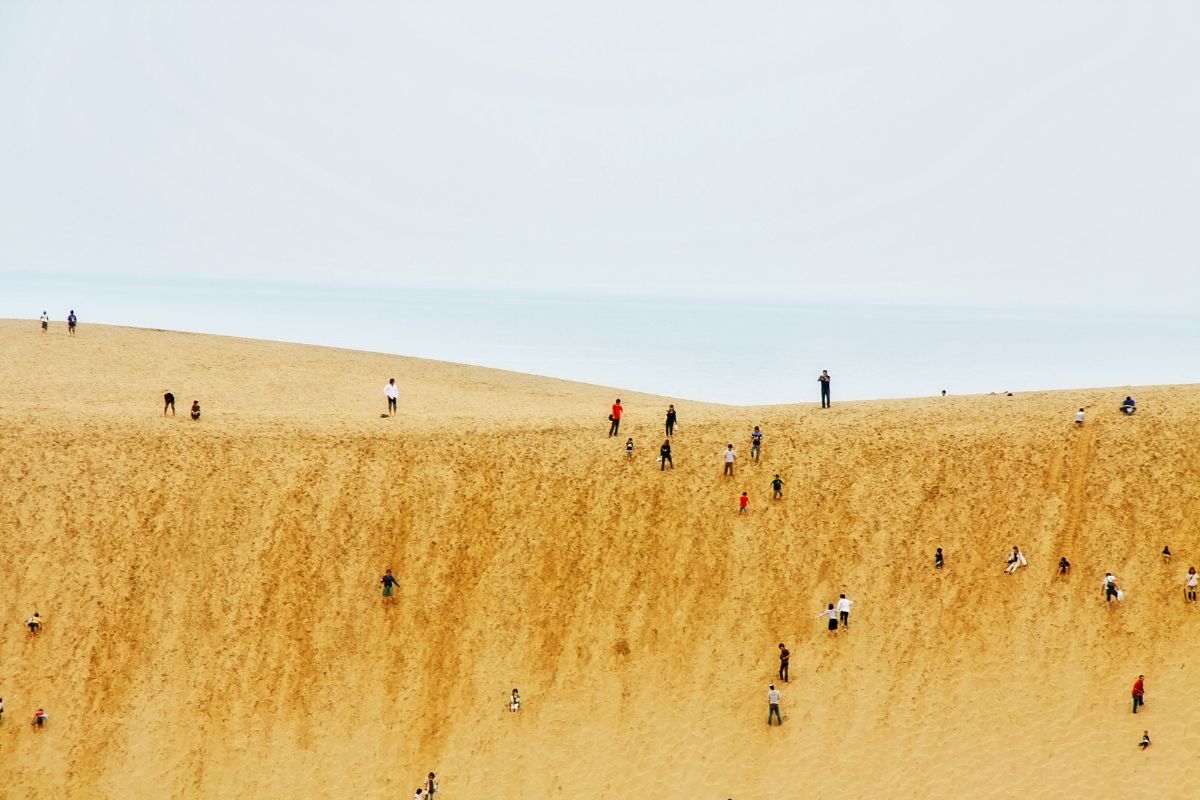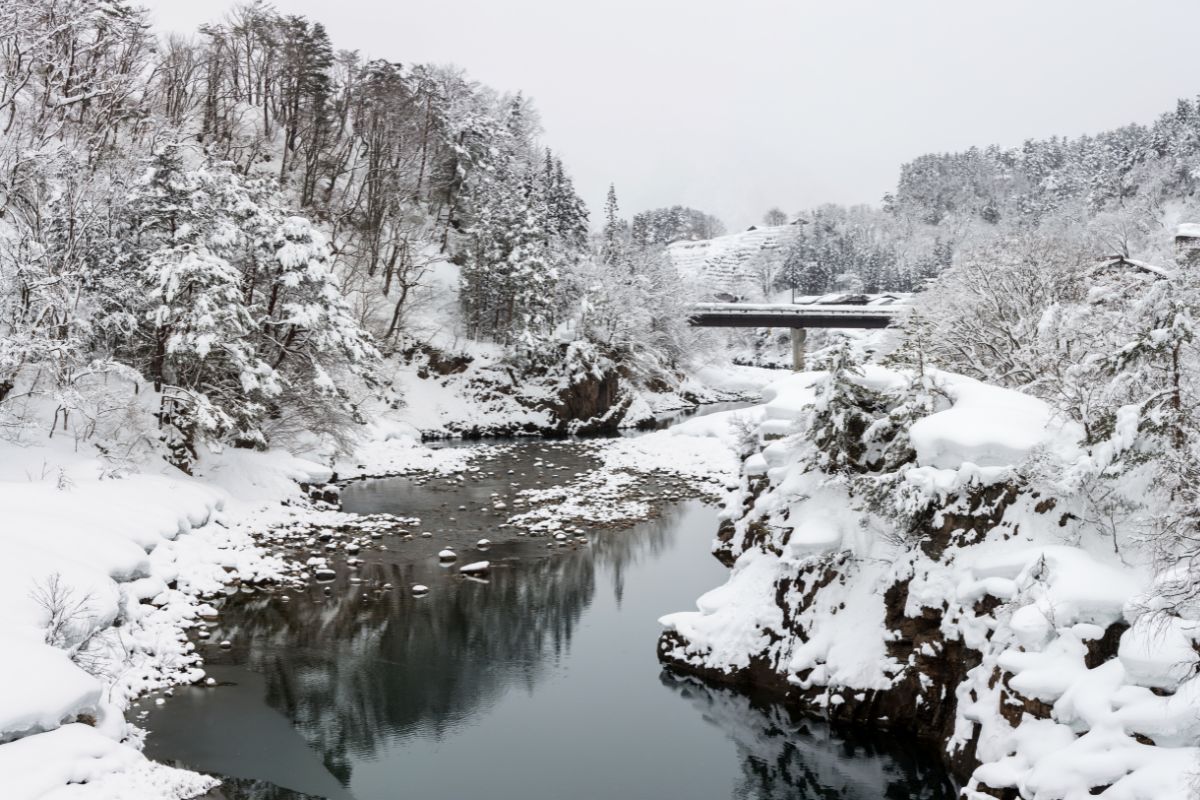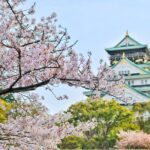Due to its position in the Pacific Ocean, Japan has a somewhat unusual combination of landscapes, ranging from woodland, to tropical beaches, to snow capped mountains. But does it have a desert?

The Geography Of Japan
As with most things in Japan, the geography is a source of contradictions.
In Japan, the fastest trains in the world fly within touching distance of some of the most ancient monuments, and the most cutting edge technologies are just as much of an importance as some of the oldest traditions.
The same is true with the geographical landscape, boasting snowy mountains, dense woodland, wetlands, and tropical beaches all on the same series of islands.
Tottori
The capital city of the Tottori Prefecture, a prominent area in the Chugoku Region of Japan, is a popular location for tourists and locals alike.
Incorporated as a city in 1889, Tottori has gone through many changes in its 100 plus years in operation, having been destroyed in the Tottori earthquake in 1943, when much of the city needed to be rebuilt and renovated.
A popular college city, with two well respected universities, Tottori plays host to exchange students from foreign nations, who come from all over Japan and the world to immerse themselves in the Japanese countryside and unique blend of modernized and traditional Japanese cultures.
As well as being a city in its own right, Tottori is also the home of Japan’s main desert landscape.
Known as the Tottori Sand Dunes, this patch of desert is a length of 9 miles long, and less than 1.5 miles wide, and is part of the UNESCO Global Geopark known as San’in Kaigan.
Tottori Sand Dunes: The Formation
Formed over a period of 100,000 years, after sediment deposits carried from the Chugoku mountains by the Sendai River were thrown into the Sea of Japan.
This caused the sand formations, which were then whipped and formed by strong winds throughout this time period.
Due to government deforestation programs which have been ongoing since World War 2, the area of the sand dunes have been steadily decreasing.
As a result, concrete barriers have been positioned along the coastline to help maintain the formations and protect them from the effects of erosion.
As you can imagine, these sand dunes attract widespread tourist attention, as such, the government has taken a lot of steps to preserve them in recent decades, maintaining their presence as a sight of unique natural beauty, and a vital source of revenue for the region.
Nearby Tourist Attractions
As with most tourist destinations, Tottori has many different attractions for people to visit, each as unusual and unique as the last.
Camel Rides
Perhaps the most unusual sight in this region of Japan are the camels, which call the sand dunes their home, and are regular sources of rides and tours for tourists.
Becoming somewhat iconic in the area, these are greatly popular amongst tourists and locals alike.
Tottori Sand Museum
The Tottori Sand Museum is the only museum in Japan where you can see professionally made sand art created by local artists.
Featuring grand and amazingly detailed sculptures, which include palaces, castles, landscapes, and statue sculptures, tourists can wander around these indoor exhibits, observing the unique phenomenon that put the region on the map.

Watanabe Art Museum
Opened in 1978, this art museum is one of the oldest in the area, and plays host to countless Buddhist sculptures, Chinese, Korean, and Japanese ceramics, ukiyo-e art, and over 200 sets of Japanese samurai armor.
Naritasan Seiryuji Temple
One of Japan’s oldest Buddhist temples, Naritasan Seiryuji Temple is an impressive complex dating back to 940 AD.
With shopping on the quaint Narita Omotesando, the nearby Naritasan park full of ponds and lush forests, and the elaborately detailed carvings in and around the temple, the area is a known beauty spot and sight of great tradition and history.
Uradome Coast
Located near Iwami, in the Tottori Prefecture, the Uradome Coast is a local beauty spot and hidden beach popular with tourists and locals alike.
The sandy beaches, dense scrubland, and surrounding areas are popular relaxation spots, and the unique rocky appearance of the cove was formed by marine erosion of thousands of years.
The name Uradome literally translates to an “abundant/rich inlet” and that is exactly what the area delivers, offering sun kissed beaches, crystal blue waters, and beautiful scenery perfect for relaxation or exploring.
Mt. Oshiroyama Observation Deck (Kawahara Castle)
Located at Kawahara Castle, the Mt. Oshiroyama Observation Deck is a popular tourist spot in the area.
Located about 10km from Tottori city, the castle was erected sometime around 1580 by Takeda Takanobu, where it was used as a base of operations for the Yamana Toyokuni (1548-1626) in their war against the advancing forces of the Toyotomi Hideyoshi.
The observation deck itself gives a spectacular view of the Sendai River, as well as the nearby Mt. Oshiroyama, from which it gets its name.
Wakasa Minkogeikan
This living museum offers a fascinating and wholesome look at the traditional history of the area.
Experience local folk art, ride in the steam train around the pass, and experience the original buildings of the long existing village.
This is perfect for adults and families alike, and offers a unique, interactive look at the region’s history, and some of the things they have to offer.
The museum also offers shopping, restaurants, and activities to keep everyone happy, relaxed and entertained.
Final Thoughts
And there we have it, everything you need to know about the Tottori sand dunes, and the surrounding sights of Japan’s unique and popular desert region.
If there are two things that Japan has to offer, it is diversity and intrigue, and this region offers them in spades. So, why not go check it out?
Something tells me you certainly won’t be disappointed!
- 16 Best Websites To Watch Japanese Movies With English Subtitles - May 11, 2023
- Is ZIPAIR The Best Airline For Traveling To Japan? - May 11, 2023
- Ryu Murakami Vs Haruki Murakami – Which One Should You Read? - May 11, 2023








